
Healing Trauma
with ACT
Confidently address trauma – including complex trauma, PTSD, and moral injury –
and integrate ACT with other exposure-based therapies
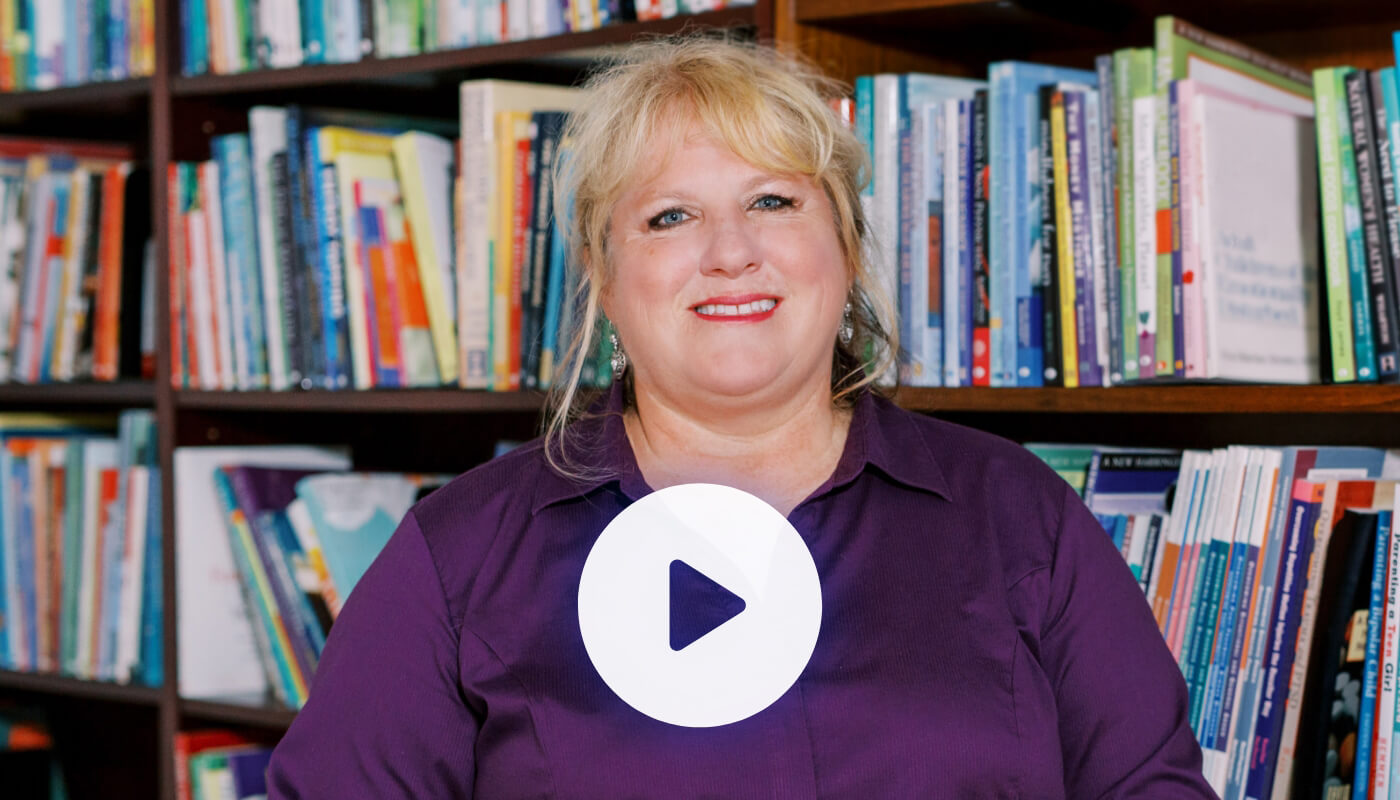
Learn ACT for Trauma
Discover how to use acceptance and commitment therapy in trauma treatment through 9 hours of video instruction, written materials, clinical role plays, audio debriefs, and experiential and practical exercises.
Lifetime Access
Course enrollment comes with lifetime access to all course materials, plus you’ll be protected by a 14-Day Money-Back Guarantee.
Enroll Now
Get Instant Access
or
For group purchases email courses@praxiscet.com. Group discounts are available for 5+ registrations.
Help trauma survivors reclaim their lives
and find renewed meaning with
Acceptance and Commitment Therapy
A letter from Dr. Robyn D. Walser
I once read about a woman who lost her child in a tragedy.
In the fallout, she was experiencing the acute kind of suffering that afflicts so many trauma survivors.
And in the article, she posed a question I’ll never forget:
“What is the point of this kind of life?”
This is a heartbreaking question many people struggle to answer following a traumatic event.
In the aftermath, suffering can eclipse everything else in their lives.
Feelings of fear and anxiety make it difficult to go to work, be in crowds, or spend time with loved ones. Thoughts of being broken compel them to hide.
And, gradually, the world around them disappears. Life becomes ever smaller in efforts to stay safe.
As mental health practitioners, it falls on us to help people answer that existential question:
What is the point of living in the face of this pain?
So much hangs in the balance of this inquiry…
… And that’s part of the reason why working with trauma is at once so rewarding and so challenging.


Finding a Way Through Trauma
Though it is not commonly talked about, trauma is a staggeringly common experience.
In fact, much of the suffering mental health professionals encounter has some tie to trauma, even if that is not the practitioner’s focus or a client’s initial complaint.
Despite its prevalence, many clinicians feel out of their depth when trauma surfaces in a case.
Worried about doing more harm than good, they may try to work around the trauma.
They avoid exposure to keep from pushing the client too far.
They hesitate when introducing mindfulness for fear of triggering a difficult memory.
At times, they might simply acknowledge the trauma and move on to another issue, because they are just unsure about how to move forward.
In a way, this mirrors how many trauma survivors feel — as if the trauma is impossible to approach or move past.
In some instances, they might even think its existence in their history has left them damaged and incapable of leading a “normal” or meaningful life.
Fortunately, we know this isn’t the case. We know that those who suffer from PTSD and the fallout of trauma can recover and lead lives of great vitality and purpose.
And, despite what our clients might think, that outcome doesn’t require erasing all evidence of the traumatic event — or even the PTSD symptoms themselves.
However, it does require clients and clinicians alike to develop a different understanding of how suffering is fueled and amplified in trauma’s aftermath.


When “Feeling Good” Replaces Living Well
Post-trauma reactions are often complicated.
Survivors must grapple not only with the traumatic experience itself but with the consequences of a violated view of self and the world.
As humans, we tell stories about everything we encounter — including our own experience.
We often hold deep assumptions that the world is orderly: that life will unfold in a predictable way, and that we should always be safe and happy.
When you’ve experienced trauma, it can break these assumptions.
For some survivors, the world becomes a frightening place. Lasting internal experiences related to the traumatic event, like fear, shame, or intrusive memories, become a danger in and of themselves. They become evidence of brokenness.
As a result, trauma survivors often try to escape from this part of themselves.
They try to suppress memories of the event as well as thoughts, emotions, or sensations related to it.
They cut themselves off from people and places that might trigger reminders and watch for signs of danger as their worlds become small and isolated.
And instead of getting less anxiety, fear, and depression, the efforts to escape these experiences actually lead to more pain.
So while the trauma itself leaves a considerable wound…
It is in trying to rigidly control their experience
after trauma that many survivors suffer most.
For that reason, we can’t help them forget the traumatic experience or bury their symptoms — even if that is what clients claim to want. To try would be like grabbing a shovel and joining them inside the hole of suffering they’ve been digging.
But we can help them get to a place where fear, anxiety, and intrusive memories aren’t the biggest things in their lives, because they aren’t the only things in their lives.
To do that, we need an approach that helps clients see that running from difficult experiences means leaving much of your life on the table.
We need an approach that gives survivors a different way of relating to their trauma and themselves, so they can break the bonds of control and reclaim their lives.


A Life-Changing Alternative to Control
Despite what many clients believe, trauma hasn’t left them broken or incapable of leading meaningful lives.
But in an attempt to disconnect from their trauma-related experiences, they get caught inside unworkable rules about how to stay safe and “stuck” stories about themselves and the world.
They become puppets to their minds and leave their hearts behind.
As a result, all of the important things in their lives fade into the background. Their world narrows to the task of managing their trauma-related emotions, thoughts, and memories.
The solution to that isn’t more control.
It’s acceptance of experience.
It’s willingness to see the world for what it is — a disorderly place — and still do what brings you meaning.
That’s why acceptance and commitment therapy (ACT) is such a powerful tool in trauma work.
In ACT, the goal of treatment is to develop psychological flexibility: the ability to live consciously in the present moment, experiencing all that is there to experience, and to move through the world in a way that serves our deepest personal values.
This can be a frightening proposition for some people at first. We’ve all been conditioned to have an “in with the good, out with the bad” mentality.
But good mental health isn’t just about the absence of symptoms like anxiety or fear.
It’s also about presence: the ability to love and play, learn and grow, to be free and exercise choice in your life.
I’ve seen psychological flexibility bring those things back into the lives of countless trauma clients over the years.
Instead of living in isolation, it allows them to build connection.
Rather than numbness, it opens them up to the whole spectrum of emotion, including love, joy, and awe as well as pain.
So while practicing psychological flexibility is not always easy…
… It’s worth it for the chance to lead an expansive life that’s both full and fulfilling.


How Psychological Flexibility Promotes Healing
One of the biggest benefits of using ACT in trauma treatment is that it helps create a path forward for both survivors and clinicians.
Creating movement can be especially challenging in trauma cases, but by taking an approach that centers on psychological flexibility, you can create an impactful therapeutic environment that encourages real change.
Here are just some of the ways this approach can help you accomplish that:
1. It helps clients separate their identities from trauma
For many clients, there is no partition between them and their trauma. Their whole sense of self becomes wrapped up in the trauma history, so much so that years later they might still identify as a soldier, victim, monster, or coward.
In many ways, they feel like they are their trauma — like its mere existence in their history defines who they are and what they get to do in life. As you can imagine, this is a recipe for narrowing one’s behavioral repertoire and can create resistance to change.
Part of the goal of psychological flexibility is to detach from narrow roles and take a broader perspective of the self. In ACT, we see that the self is a context through which the content of our lives unfolds; we are not the content itself.
This allows clients to see traumatic events as one of thousands of experiences that have happened to them in the past. It does not define them in the present moment or the future.
When clients can take this view of themselves, it allows them to make room for more varied roles in their lives. They may be a trauma survivor, but they can also be a sibling, a mentor, an activist, and a friend. In taking this perspective, they find the freedom to change, grow, and move beyond the trauma.

Psychological flexibility offers a broader view of self
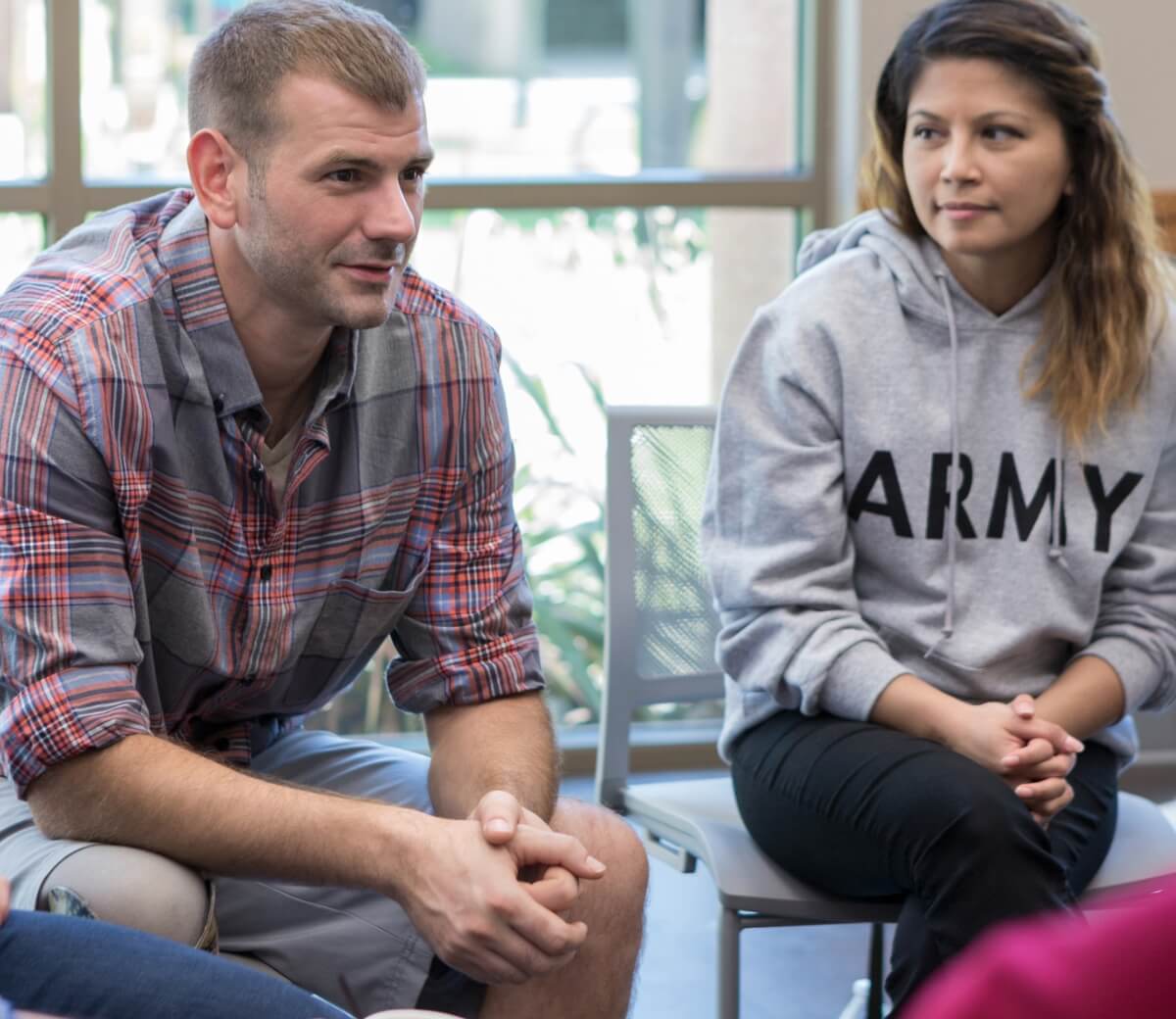
Mindful awareness allows presence in the moment
2. It frees up choices
One major problem with running from experience is that it inhibits clients’ ability to see their own behavior clearly. Trapped in hyperarousal and a narrowed focus, they begin, in a way, sleepwalking through life — going through the motions without tracking the consequences of their actions.
For example, if a war veteran thinks only of their anxiety in a social situation and doesn’t listen when their friend speaks, they might not even notice their friend getting upset. They focus so narrowly on controlling their anxiety that they can’t see the connection between their lack of attention and their friend’s annoyance. Therefore, they cannot adjust their actions accordingly.
Part of building psychological flexibility is developing mindful awareness. It gives clients the ability to live consciously in the present moment and expands their attention. That way, they can be more attentive to the stream of events around them and how their actions impact those events. This can help clients identify choice points — junctures where they can change their behavior and act in a way that will serve them better.
3. It makes exposure more approachable
Exposure can be scary for both the client and the clinician. Clients feel nervous about interacting with traumatic memories, and therapists sometimes feel conflicted about the process, worrying that exposure will impact the safety of the therapy space or retraumatize the client.
Because of its focus on psychological flexibility, ACT can make exposure interventions much more approachable.
Acceptance itself is a form of exposure — a practice in making contact with difficult feelings like anxiety, fear, or shame. It asks that we stay in the present moment and experience all that is there to be experienced while keeping sight of our values.
Within this process, we can help clients build a tolerance to distress more gradually before diving into trauma-focused interventions. Practicing willingness to experience difficult thoughts, emotions, or memories can be done with nontraumatic experiences at first. Then you can graduate to virtually any challenging internal experience related to the traumatic material.
This allows you to meet clients where they are, maintain a safe and trusting environment, and help them build openness more gradually if needed.

ACT can make exposure interventions more approachable
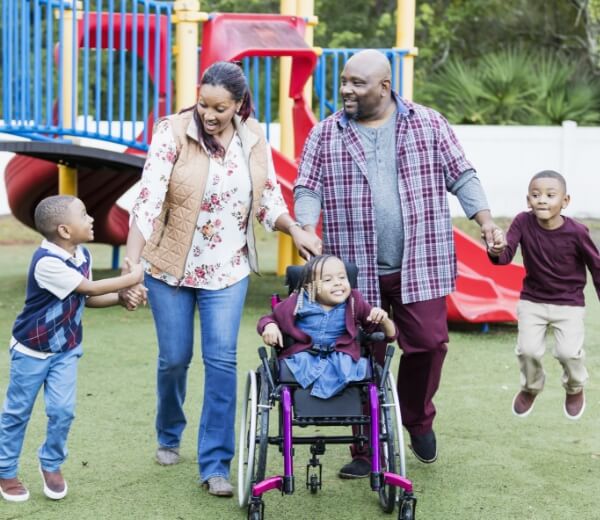
ACT helps us support well-being in a broader sense
4. It allows us to simultaneously address other issues
There are many aspects of a trauma survivor’s experience that do not necessarily fit neatly inside a PTSD diagnosis. These often include family and relationship conflicts, substance abuse, suicidality, and many other problems that stem from emotional unavailability, disconnection, and unwillingness to feel.
These issues can have an immense impact on a client’s well-being. And yet, they are not typically accounted for in most trauma protocols. In many cases, PTSD symptoms are the sole focus of the intervention, and this can leave a lot to be desired in terms of improving an individual’s overall quality of life.
Because ACT is transdiagnostic, it allows us to support well-being in a broader sense. Developing clients’ psychological flexibility will not only help alleviate PTSD and other trauma-related symptoms but will also give clients tools to navigate additional challenges they commonly face in the aftermath of trauma. It can even make them less likely to be revictimized in the future, which is an incredibly important outcome that every practitioner hopes for.
By building this skill, clients will be not only better equipped to navigate challenges related to their PTSD symptoms, but to make choices that serve their values in every area of life.


Applying ACT to Trauma Treatment
After using ACT in my own trauma practice for many years, I’ve seen the profound impact it can have on a life.
That’s why I’ve dedicated much of my career to teaching other mental health practitioners how to use this evidence-based method with their own clients, not only to treat trauma, but to help anyone who’s suffering inside a life that feels small, painful, and lonely.
However, with regard to trauma cases, ACT does something especially important. It helps clients see that they don’t have to be free of pain to live full, meaningful lives. Indeed, willingness to feel pain opens up the possibility to feel joy as well.
With an ACT approach, we can help them build lives that are rich and fulfilling, even in the face of suffering.
And we can do it in a way that brings compassion to bear in a disorderly world.
I’m excited to make this training more accessible to clinicians who encounter trauma in their work with this new on-demand online course.
I hope it helps you make a difference in this very human problem, infusing your clients’ lives with freedom, meaning, and vitality.

About the Trainer
Robyn D. Walser is a master trainer in acceptance and commitment therapy and an expert in helping trauma survivors find renewed meaning. She’s renowned for being both heart-forward and bold in her clinical work, as well as for her handling of a key ACT technique, creative hopelessness, which practitioners will see at work in multiple role plays inside the course.
In addition to leading ACT workshops all over the world, Dr. Walser is an active trauma therapist, a clinical professor at the University of California, Berkeley, and a co-director of the Bay Area Trauma Recovery Clinic. She has also authored and co-authored several influential ACT books, including Acceptance and Commitment Therapy for the Treatment of Post-Traumatic Stress Disorder and Trauma-Related Problems, The Heart of ACT, and The ACT Workbook for Anger.


Introducing…
Healing Trauma
with ACT
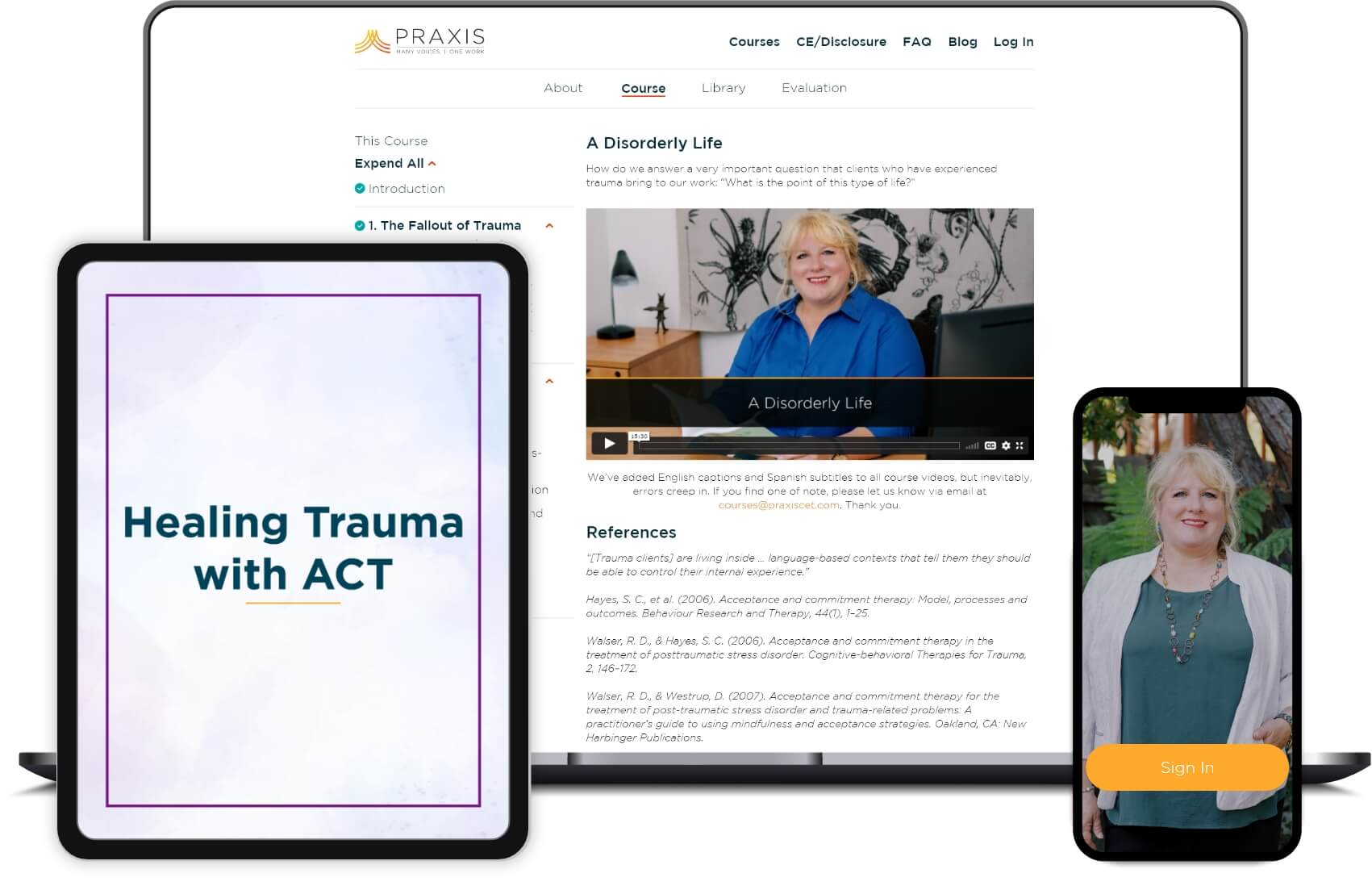
Healing Trauma with ACT is an online course taught by Dr. Robyn D. Walser, a renowned trainer, researcher, and thought leader in the acceptance and commitment therapy (ACT) community and expert in helping clients recover from trauma.
Inside the course, Dr. Walser will teach you how to apply ACT in trauma treatment to promote resilience, engagement, and positive change among trauma survivors. Through 12 modules of clear instruction and role-play demonstrations, you will learn how to loosen trauma’s grip by building clients’ psychological flexibility. You’ll also complete experiential and practical exercises and listen to detailed role play debriefs in order to ground key learning points.
After completing the course material, you’ll be able to more effectively and compassionately help trauma survivors heal, embrace experience, and find a renewed sense of connection and meaning.
Course Format
Healing Trauma with ACT is an on-demand online course. This means the instruction has been previously filmed and can be completed largely at your own pace.
The 12 modules will be released at a rate of 2 modules per week, and you can complete the material any time throughout the week, as your schedule permits. Since you will have lifetime access to all course content, you’re also welcome to work through the modules more gradually or revisit them at any time in the future.
The course includes filmed video instruction, role plays, audio clips, written materials, and experiential and practical exercises to help you internalize key lessons. You’ll also see Dr. Walser demonstrate central concepts in clinical role plays and will hear her debrief the sessions so you can see the interactions through her eyes.
Through this combination of materials, you’ll learn how to use acceptance and commitment therapy to help trauma survivors overcome suffering and lead more expansive and meaningful lives.
Course content and materials are in English, including the quizzes, which will be conducted at the end of each module and will cumulatively serve as the CE-required post-test. All videos will include subtitle options in English and Spanish.
Course Structure
The first two modules focus on why trauma generates prolonged suffering and how the ACT model helps address the core of the issue.
In Modules 3 and 4, you’ll learn how to target different ACT processes in order to encourage mindful awareness and behavior change — two important elements of psychological flexibility.
Modules 5 and 6 provide instruction in formulating case conceptualizations from an ACT perspective so you can gain a better understanding of your clients and plan interventions.
In Modules 7 and 8, you’ll discover how to navigate and read therapeutic interactions more effectively, so you can build more trusting relationships and seize on intervention opportunities as they arise.
Modules 9 and 10 cover moral injury, a common type of trauma that can be particularly complex, and how to treat it using ACT.
And, finally, the course concludes in Modules 11 and 12 with instruction in how to effectively integrate ACT with other exposure-based therapies and a few crucial reminders of the immense difference this method can make in a trauma survivor’s life.
Throughout the course, you’ll gain insight and a strong foundation in ACT treatment for trauma that will allow you to…
- Address trauma more confidently through all stages of work with an approach that helps clients heal from suffering and approach life with renewed curiosity and vitality
- Gain a better understanding of clients’ unique case features and their behavior, so you can increase motivation and plan a way forward that is attuned to their particular circumstances
- Enhance your ability to read client interactions, so you can cultivate therapeutic relationships that are collaborative, trusting, and impactful
- Build your repertoire of trauma- and exposure-focused interventions by integrating ACT principles with other evidence-based therapies
- Do work that goes beyond simply getting clients back to a “symptom-free” baseline, allowing them to experience growth and fulfillment
Curriculum
Module 1: The Fallout of Trauma
- Complete an exercise that illustrates the two types of human knowledge
- Learn about the psychological consequences of trauma and how it can lead to ongoing suffering
- Discuss why symptom reduction should not be the only goal of therapy
- Learn how acceptance works as an effective alternative to experiential control
Module 2: Psychological Flexibility
- Learn what psychological flexibility is and how it benefits trauma survivors
- Get acquainted with the six core processes of the ACT model and how each supports psychological flexibility
- Discuss how to use creative hopelessness to help clients open up to a new way of addressing their trauma
- See an example of creative hopelessness application in a role-play segment
Module 3: Mindfulness Processes
- Dive into how to cultivate the ability to live with conscious awareness (and why it’s important)
- Discuss the benefits of mindfulness post-trauma
- Learn the difference between “trait” and “state” mindfulness
- Discover how to incorporate self-compassion in mindfulness practice
- Learn about perspective taking and how it can promote a broader view of the self and trauma
Module 4: Behavior Change Processes
- Take a deeper look at the processes that help move clients from a narrow state of fear and unvaried behavior to a broad state of engagement
- Learn how the present moment and self-as-context processes support motion
- Explore how values link to action and a stance of living with the feet rather than the mind
Module 5: Case Conceptualization
- Discover how to incorporate ACT into your therapeutic contracts
- Hear about how you can gain a better understanding of clients and their behaviors using an ACT approach
- Learn how to identify psychological inflexibility (and identify intervention opportunities) during client interactions
- Explore where to look for strengths and barriers to help you plan treatment
- Discuss assessment tools that you can use to gauge progress
Module 6: Case Conceptualization in Practice
- Complete a conceptualization exercise involving a role-play session
- Listen to an audio debrief of the interaction
- Review Dr. Walser’s full conceptualization of the case
Module 7: The Therapeutic Relationship
- Learn about the ACT “stance” that practitioners can take in the room
- Discuss how to attend to the different, fluid processes in your work: the overall therapeutic arc, the interpersonal exchange, and intrapersonal movement
- Explore ways to increase your own resilience as a practitioner
Module 8: The Therapeutic Relationship in Practice
- View another role play and complete an exercise about self-disclosure
- Dig deeper into complex trauma and how to address it in your therapeutic relationship
- Hear Dr. Walser’s commentary of the session
Module 9: Moral Injury
- Learn about the characteristics of moral injury and why emotional symptoms aren’t pathological
- Compare moral injury and PTSD
- Discuss why ACT is an effective treatment for this condition
Module 10: Treating Moral Injury
- Learn how to promote moral healing using ACT
- Watch a role play segment with a war veteran to demonstrate how you might work with a moral injury client
- Listen to Dr. Walser’s detailed debriefs of the interaction
Module 11: Integrating Other Therapies
- Discuss the three stages of trauma treatment and recovery
- Explore how to complete exposure in a way that’s ACT-consistent
- Learn how to incorporate ACT with various evidence-based trauma therapies: written exposure therapy, prolonged exposure, cognitive processing therapy, EMDR, and somatic experiencing
Module 12: Making an Impact
- See a final role-play segment and listen to Dr. Walser’s audio debrief
- Hear testimonials from two real clients illustrating the difference ACT can make in a trauma survivor’s life
- Reflect on your values as a therapist in a closing exercise
Course Sample
This course was filmed using the most up-to-date recording equipment. This allows us to produce a training experience of the highest visual and audio quality, which you can sample in the excerpt below.
In this video, you’ll watch Dr. Walser help a role-play client, named Matt, shift perspective and see new possibilities for change.
Previously in the session, Dr. Walser worked with Matt to explore his feelings of discomfort around therapy and reassured him that he gets to choose whether he will participate in their work. Matt expressed relief at this idea, revealing that he feels like he does not have freedom of choice in much of his life due to his nervousness.

Supplemental Materials
In addition to the 12 core modules, this course also includes three bonus learning materials to supplement your learning experience.
Bonus #1: Private Facebook Group for Course Members
A very useful part of in-person trainings is having the opportunity to meet other practitioners and share experiences and resources.
To help recreate that environment inside this on-demand course, we’ve created a private Facebook Group for enrollees. This is a space where you can share thoughts and resources, network, and participate in an ongoing discussion about how to help clients heal from trauma.
(Note: Participation in the Facebook Group is entirely optional and not required for course completion.)
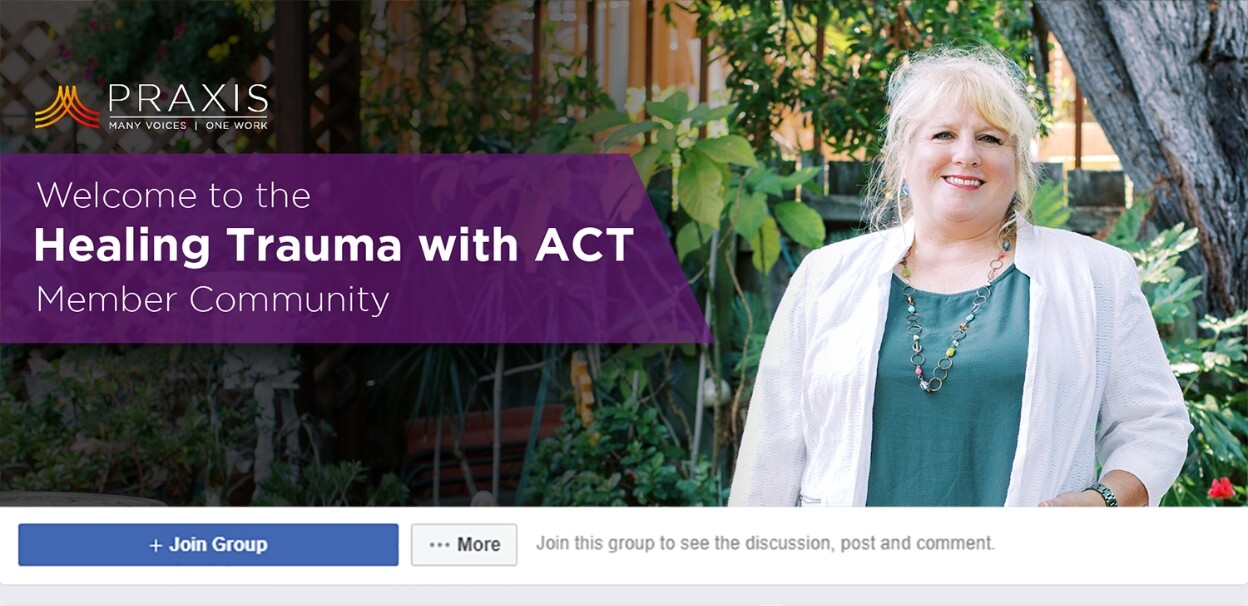
Join our private group for members

Learn how to address complex trauma in your work
Bonus #2: Treating Complex Trauma (Live Webinar Recording)
Complex trauma involves exposure to recurring traumatic events, typically interpersonal in nature, over a long period of time. Common examples include trauma from domestic violence, childhood abuse, or ongoing sexual abuse. This experience has a cumulative effect on the survivor and can introduce another layer of complexity to your work.
Everything you will learn in this course can be applied to cases of complex trauma. However, there are additional considerations you should be acquainted with as you work with individuals who have this kind of history. In this recorded webinar and brief Q&A, Dr. Walser discusses these considerations and how to address complex trauma in your work.
Bonus #3: Expert Panel Discussion
ACT is a flexible model that allows practitioners to personalize their approach according to their own strengths as well as to clients’ specific contexts and needs. For that reason, there isn’t one “perfect” way to interact with a client or to apply ACT.
To give you a chance to see this flexibility for yourself, Dr. Walser will discuss a role play from the course with fellow ACT experts, Dr. Steven C. Hayes and Dr. Manuela O’Connell. Together, they will watch the role play and discuss points of interest, pulling on each experts’ strengths so you can see the various lenses you can bring to sessions. This will allow you to gain different perspectives on the same scenario, and will further display the richness that lies in each interaction.
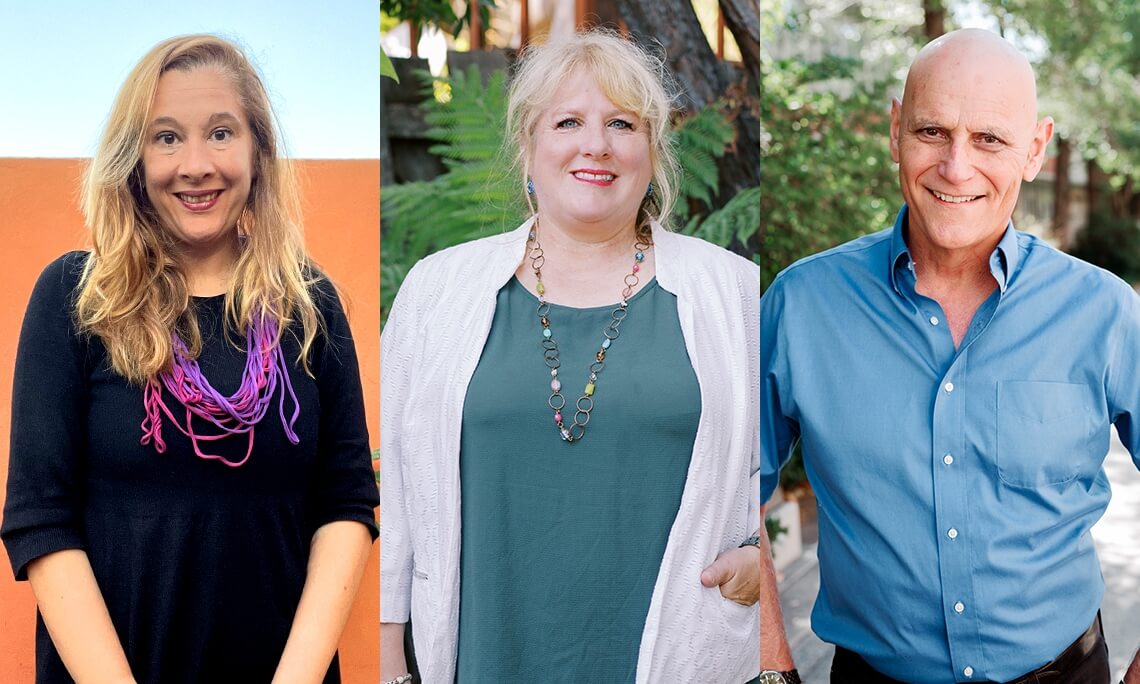
Hear different perspectives from an expert panel
CEs
Upon completion of the core course content and supplemental materials, plus evaluations and post-test as required, participants will also be eligible for 12 CE hours approved for the following professionals:
Counselors
Psychologists
Nurses
Physicians
Behavior Analysts
Substance Abuse Counselors
Social Workers
Prior to registering, please review complete CE information by clicking here: CE Details
Enroll in Healing Trauma with ACT
When you enroll in the course, you get lifetime access to all course materials.
What’s included:
- 12 core modules
- 9 hours of video and audio instruction, including clinical role-plays and debriefs
- Experiential and practical exercises
- Written course materials
- Video subtitle options in English and Spanish
- Lifetime access to all course content
- Bonus #1: Private Facebook Group for Course Members
- Bonus #2: Treating Complex Trauma (Live Webinar Recording)
- Bonus #3: Expert Panel Discussion
To join, select one of the following options:
A one-time payment of
$449 (USD)
OR
5 monthly payments of
$99 (USD)
For group purchases email courses@praxiscet.com. Group discounts are available for 5+ registrations.


14-Day Money-Back Guarantee
To make course enrollment risk-free, all enrollees are fully covered by a 14-day refund policy:
If you decide for any reason the course isn’t right for you, email our support team at courses@praxiscet.com within 14 days of enrolling, and we will be happy to refund your entire course fee, unconditionally.



What Course Members are Saying

“This course is perfect for any mental health provider working with clients experiencing trauma. But many of the skills Robyn teaches and demonstrates can also be used when treating other issues. Watching Robyn in session is in itself enlightening and inspiring. I learned new skills and refreshed existing ones about using ACT, working with trauma, and building the therapeutic relationship. The course was structured in such a way (small video segments and lessons) that it was easy to learn at my own pace. One of the best courses I've taken.”
Sylvie P., Marriage and Family Therapist
“As someone who has done ACT for years and studies it rigorously, I was worried that this program wouldn't offer anything novel. However, watching Robyn in action was both validating and inspiring. She offers some advancements in ACT theory and her application techniques have definitely informed my work since. I highly recommend this program.”
John P., Mental Health Counselor
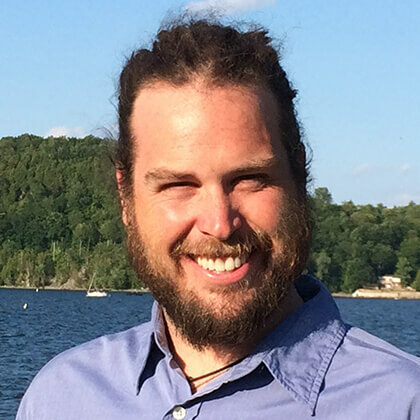

“This course is great for those who have a general knowledge of ACT and those who have used ACT interventions for years and looking to add more tools to support clients with trauma. I particularly found it helpful to see how to present the different phases of trauma treatment and how to integrate Phase II Trauma therapies (such as EMDR or Prolonged Exposure) to support ACT principles.”
Christina P., Licensed Professional Counselor
“...All lessons were important: the lessons on ACT processes, the mindfulness practices, and the videos on the practical application of ACT with trauma and moral injury. The workshop on Complex Trauma was extremely relevant for me. I found the segment where the experts offered feedback and comment on a piece of work extremely useful.
The course helped me to become much more clear and confident on how to apply ACT while treating trauma and how to integrate ACT with other models and approaches that I was already using. The possibility of working at my own pace was crucial as otherwise, it would not be possible to conciliate with my workload.”
Fernando L., Cognitive Behavioural Therapist
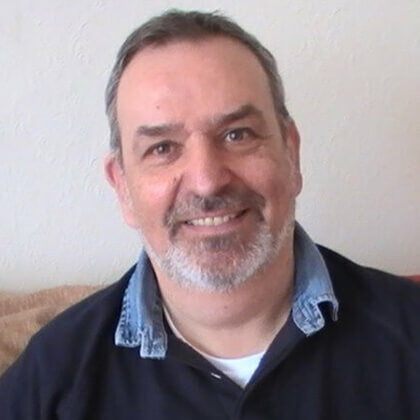

“It helped me a lot to get in contact with my clients and their experience of trauma in a way that lines up with my values as a therapist.”
Sabine K., Child and Adolescent Psychotherapist, MA, BCBA


Questions and Answers
Q. Do you offer group rates?
Yes! We provide a discount for groups through our Group License.
This license allows you to purchase as many memberships as you need through one transaction and gives each individual access to their own account and the ability to earn CEs. It’s designed for groups in which each person should have their own login with the ability to go through the entire course on their own. There’s a 10% discount off the total price for 5–9 accounts and a 20% discount off the total price for 10+ logins.
Our Group License also allows you to purchase access to a course in advance.
This means that if you would like your current clinicians to get started on a course but know there will be a few more individuals added to your team in the near future, you could purchase all the memberships you need now and once the new clinicians are ready to get started, you can simply send us their names and email addresses and we will get them enrolled.
To purchase a group license and take advantage of group rates, email us at: courses@praxiscet.com (Group rates cannot be purchased using the standard checkout on this page.)
Q. How much ACT experience will I need to take this course?
A basic understanding of the ACT model, whether acquired through a book or an introductory ACT class, will be helpful but is not essential. The course provides all of the information needed to begin using ACT to treat trauma, even if you do not already have a background in the model.
Q. What type of trauma client is ACT suitable for?
ACT is suitable for all types of trauma clients. Treatment using the ACT model focuses on the individual and the context in which they live and relate to others. It’s less about a specific diagnosis and more about how a client’s behaviors are functioning in their life. It is a process-based approach that aims to build psychological flexibility and enable the client to lead a richer, values-driven life no matter the difficult thoughts, sensations, and emotions they experience as a result of trauma.
Q. How is this course different from Dr. Walser’s live online training in trauma treatment?
This on-demand course shares a lot of overlap with Dr. Walser’s live online training on treating trauma. However, it includes many new and different features that make it a great refresher and training option for practitioners who have attended her live courses in the past. Some of those elements are:
- Full-length, high-quality role plays with detailed audio debriefings by Dr. Walser
- Experiential exercises to help ground key lessons, including several audio exercises that Dr. Walser recorded (as well as transcripts) that you can also use in sessions with clients
- Written exercises and practical homework that reinforce what you’ve learned
- More detailed instruction in complex trauma
- An inside look at how Dr. Walser conceptualizes trauma cases
- A bonus panel discussion about one of the role plays with two other ACT experts — Steven C. Hayes and Manuela O'Connell
- Lifetime access to all materials, so you can revisit course content at any time
If you’re unsure about whether the content will be a good fit for you, you can always try it out for yourself. If you find it’s not as helpful to you as you hoped, you can email us at courses@praxiscet.com within 14 days of joining for a full, unconditional refund.
Q. Can I integrate ACT with therapies I already use?
Yes, you can. ACT is a flexible model that can be easily integrated with other therapies, including many exposure-based and trauma-focused treatments. However, it is important to ensure that the other modalities are theoretically aligned with ACT principles; in many cases, you can make small adjustments to protocols to achieve that alignment. In the course, you’ll learn about several cutting-edge trauma therapies and how they can be effectively integrated with an ACT approach.
Q. I’m not a psychologist. Could this course be helpful to me?
If your work involves helping trauma survivors live more expansive and fulfilling lives, this training can help you accomplish that. Trauma is a widespread issue and professionals across a variety of fields deal with it in their work. Knowing how to address it from an acceptance and commitment therapy perspective can make an immense difference in the life of an individual, even in non-therapy settings. The application within the course instruction is therapy-based, but you will learn principles that will be useful in many environments where trauma may be involved, such as social work and primary care.
Q. Will this course help me work with complex cases?
Yes, it will. Because ACT is transdiagnostic, it can help you address trauma symptoms as well as other issues that often coincide with, but are not strictly part of, a PTSD diagnosis, such as relationship problems, substance abuse, and anxiety. As part of the course, you will also receive access to a live webinar recording of Dr. Walser specifically discussing complex trauma and how to treat it using ACT and the three stages of trauma recovery.
Q. Will course videos have subtitles?
All video content will have subtitles available in English and Spanish (and you may also slow down or speed up video playback if you wish). Additional language options will be considered seriously in the future, depending on interest.
Q. Will the course be available in other languages?
All course content and materials are in English, but to help make the training accessible to our international community, subtitles in Spanish and English will be available for the video content, including the role plays. (You can also slow down, or speed up, the video playback if you wish.)
Q. How much time will I need to dedicate to this course?
The 12 modules will be released at a rate of two modules per week to give you time to absorb the material before moving on. The approximate duration of each module varies, but you can expect to spend between 1.5 to 2.5 hours watching videos and doing exercises per week.
The duration of the course as a whole will depend in part on you since it’s self-paced. You can keep pace with the weekly schedule, or move through at a slower pace if that suits your needs better. Enrollment includes lifetime access to all materials, so there’s no need to rush.
Q. How long will I have access to the course?
Enrollment in Healing Trauma with ACT includes lifetime access to all course materials, so you can work through the modules at your own pace and revisit videos and exercises at any time in the future. You’ll also have access to any future updates made to the course.
Q. I’m in the middle of another training; can I join now and start this course once I’m finished?
Yes, since enrollment includes lifetime access to all course materials, you can enroll in the course now and get started whenever it’s convenient for you. The course is self-paced, so you can move through the modules on your own schedule and revisit videos and exercises at any time in the future. You’ll also have access to any updates made to the course.
Q. Is this course eligible for CE credit hours?
Upon completion of the core course content and supplemental materials, plus evaluations as required, participants will be eligible for 12 CE hours, approved for the following professionals:
Counselors
Psychologists
Nurses
Physicians
Behavior Analysts
Substance Abuse Counselors
Social Workers
Prior to registering, please review complete CE information by clicking here: CE Details
Q. Do you offer scholarships?
We have a limited reduced-fee program to help make this training accessible to those who would otherwise be unable to enroll, with priority given to practitioners in countries with developing economies and those who are facing financial hardship. To learn more about this program, please email us at courses@praxiscet.com.


Who Should Consider this Course?
Healing Trauma with ACT will be a good fit for you if…
- Your work involves helping trauma survivors overcome fear and find meaning — whether that happens in a trauma clinic, the therapy room, or another setting
- You want to be able to address trauma boldly and compassionately instead of working around it
- You’re interested in incorporating exposure, acceptance, and mindfulness with trauma clients but want to do it in a way that’s effective and heartfelt
- You want to forge stronger therapeutic relationships with clients who have trauma backgrounds, so you can help them work through the past and live in the present
- You’re committed to helping those who have experienced trauma make life-altering changes that help them become more connected and fulfilled
If any of the points above resonate with you, this course will help you work more effectively and make a bigger impact.
Enroll in Healing Trauma with ACT
When you enroll in the course, you get lifetime access to all course materials.
What’s included:
- 12 core modules
- 9 hours of video and audio instruction, including clinical role-plays and debriefs
- Experiential and practical exercises
- Written course materials
- Video subtitle options in English and Spanish
- Lifetime access to all course content
- Bonus #1: Private Facebook Group for Course Members
- Bonus #2: Treating Complex Trauma (Live Webinar Recording)
- Bonus #3: Expert Panel Discussion
To join, select one of the following options:
A one-time payment of
$449 (USD)
OR
5 monthly payments of
$99 (USD)
For group purchases email courses@praxiscet.com. Group discounts are available for 5+ registrations.




Closing Thoughts from
Dr. Walser
When trauma clients seek treatment, they’re often looking to be made whole again.
That’s what the word “heal” actually means.
As a trauma survivor myself and a clinician in the trauma space for many years, I understand why they have this goal. Because I’ve seen what fear can take from you.
It can leave you numb and disconnected.
It can make your life small and narrow.
It can make it seem like the only thing to do is hide.
I’ve seen trauma clients who confined themselves to an apartment or bedroom for years because it seemed too dangerous to be out in the world.
I’ve had clients who cut themselves off from families and friends because they were afraid.
In the effort to stay safe, they left their hearts behind.
But wholeness can’t be gained through subtraction.
Even if hiding could help eliminate PTSD symptoms, it doesn’t leave much room for other experiences, like joy, love, or freedom — everything that gives beauty and meaning to this life.
When we help survivors embrace all parts of themselves, even the parts they most want to hide, we can help them reconnect with the full menu of life experiences.
We can help them step into their wholeness.
It is my hearty belief, that despite their trauma and feelings of being damaged, their wholeness was there all along. We just need to help them see it.
That’s what we can help our clients pursue when we apply ACT to trauma — a full, whole sense of self engaged in meaningful living.
I hope you’ll join the course and see it for yourself.
